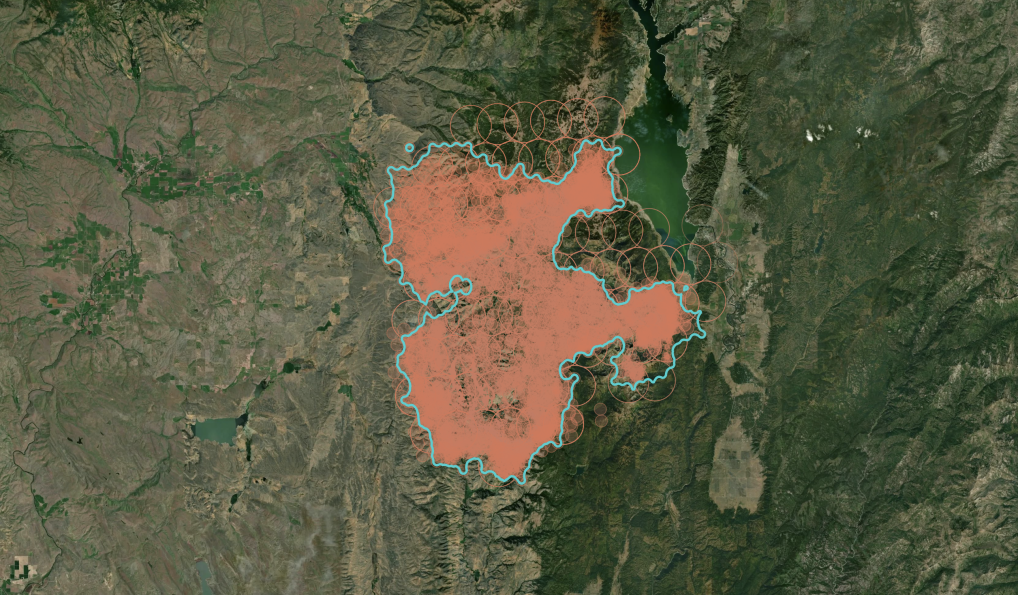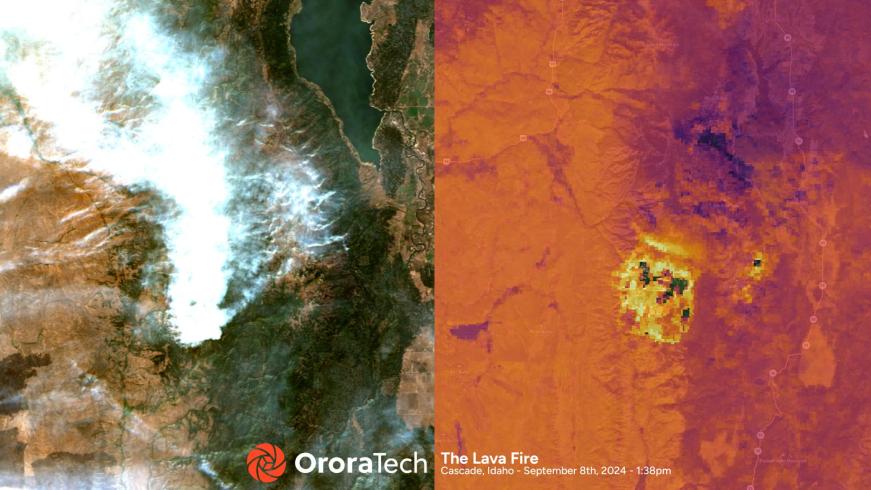Lava Fire: what early detection could have changed
Learn how OroraTech detected the Lava Fire three days before it was officially reported, and what that time gap meant for cost, containment, and coordination.


Wildfire detection before the first alarm
In September 2024, a lightning strike ignited the Lava Fire in Idaho’s Boise National Forest. The fire reached nearly 100,000 acres and involved multiple federal, state, and local response teams.
OroraTech’s Wildfire Solution detected the first thermal signature almost 72 hours before the fire was officially reported.
This case study outlines how earlier insight could have supported faster action, improved coordination, and potentially reduced suppression costs.
A deeper look into the Lava Fire

What you'll learn
-
Timeline from first thermal detection to full containment
-
Fire radiative power (FRP) insights from OroraTech’s thermal satellite system
-
Visuals from the Wildfire Solution platform: clusters, hotspots, and fire perimeter
-
Estimated suppression costs and where early action could have made a difference
-
Key lessons for faster detection, triage, and resource allocation
Unlock the full story
Get the full case study with timeline, visuals, and insights. Just enter your details below, and we’ll send it to your inbox.